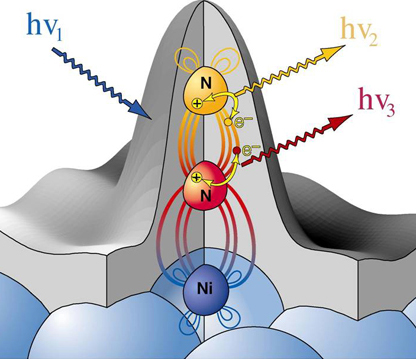
 |
Core Level Spectroscopy
Creation and Decay of Core Holes
Spectroscopic Techniques
We can create a core-hole through the absorption of incoming light with energy matched to the binding energy of a core electron. This absoprtion causes the core electron to be excited to a bound state or to the continuum where it will become a free particle. The creation of a core hole by ionization forms the basis for XPS while the creation of a core hole by excitation is studied in XAS.
After ionization, the absorbing atom is in a highly excited state due to the creation of a core hole. Soon after the atom relaxes via the core hole decay. Non-radiant dexcitation of core holes forms the basis for AES, while radiant decay is studied in XES, both of which provide tools for probing ocuppie d electronic structure of a model system.
These events only consider a core-ionized initial state prior to the decay. However, an in itial state with the core electron instead excited into a bound state can modify the decay process. The two steps, creation and decay, can lead to coupling and the whole process can be considered a one step event. These events are called resonant processes and can involve radiant and non-radiant decays. The excited electron can either participate in the decay process or be passive as a spectator leading to very different types of final states as shown below.
Click here or follow the links below for a more detailed description of the different spectroscopic techniques.
|
Ionization
|
Excitation
|
||
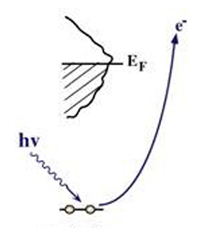 |
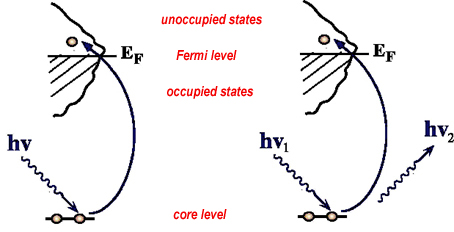 |
||
|
X-ray Inelastic Scattering
(XIS) |
|||
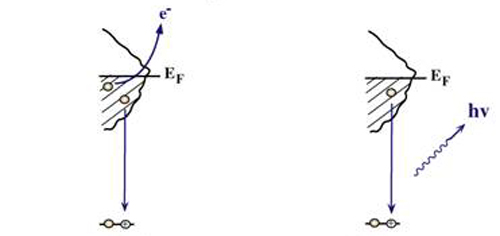 |
|
|
Non-Radiant |
Radiant
|
|
Non-Radiant
Resonant Photoelectron Spectroscopy ( RPES) Resonant Auger Spectroscopy (RAES) Autoionization Spectroscopy (AIS) |
Radiant
Resonant Inelastic X-ray Scattering (RIXS) Resonant X-ray Emission Spectroscopy (RXES) |
||
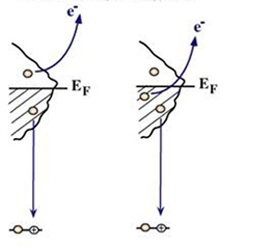 |
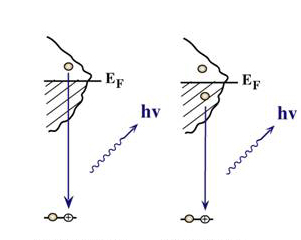 |
||
| Participator decay one hole final state< /font> |
|
|
|
back to Introduction
